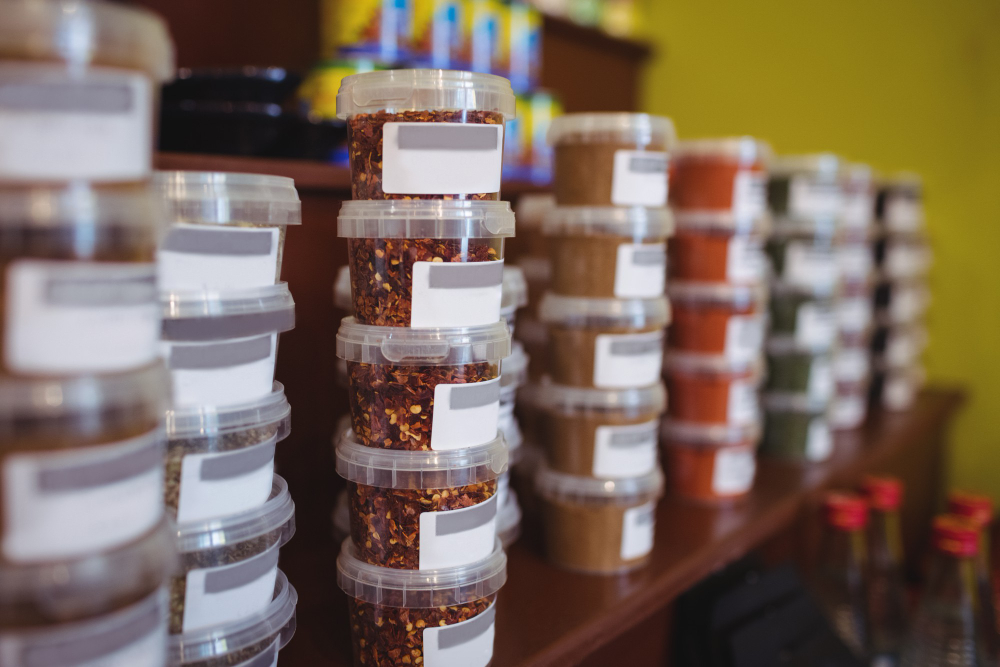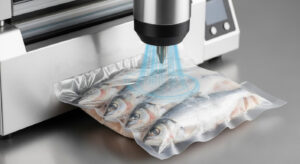Stop Losing Sales: A Guide to Professional Food Packaging in Nigeria

More than 50% of the time, you are losing sales because of your Packaging.
Your recipe is perfect. The taste is irresistible. But that is not enough. You have to sell an experience, and your packaging is the very first thing your customer sees. Trust us when we say: “Your customers judge your book by its cover.”
And if that first hello is a nylon bag or a leaky bottle, your customer would say no because it looks inferior to the competition. It’s time to stop letting poor packaging undermine your hard work.
Table of Contents
- The Real Cost of Bad Food Packaging
- How to Create Professional Packaging: A 4-Step Guide
- Step 1: Master the Seal (Impulse vs. Band Sealers)
- Step 2: Choose the Right Materials
- Step 3: Make Your Brand Memorable
- Step 4: Provide Clear Information
- Conclusion: Great Packaging Isn’t a Cost—It’s an Investment
- Frequently Asked Questions (FAQ)
The Real Cost of Bad Food Packaging
When you do not invest effort in your packaging, it actively spoils your business in three key ways:
-
It Destroys Customer Trust
Customers easily get used to good experiences, but they do not forgive and forget bad experiences. A secure package is a promise of quality. It is a way to tell your customers that you are the best before they even open the product.
-
It Reduces Shelf Life
Without a proper, airtight seal, your products are exposed to air and moisture. That means crunchy snacks get stale, pastries dry out, and harmful bacteria can grow. This leads to wasted stock, unhappy customers, and distributors..
-
It screams “low-quality”
Which product would you rather buy? The one in a plain, rough nylon, or the one in the neat, tight, branded pack? Professional packaging commands a higher price and communicates that your product is worth your customer’s money.
How to Create Professional Packaging: A Simple 4-Step Guide
Upgrading your packaging doesn’t have to be complicated. By focusing on four key areas, you can instantly elevate your product’s appeal and value.
Step 1: Pick the Seal type(Choosing the Right Sealer for Your Product)
The seal type is the single most important element for freshness and security.
For Maximum Freshness & Shelf Life: The Automatic Vacuum Sealer
This is the best tool for preserving quality. An Automatic Vacuum Sealer works by removing all the air from the package before creating a super-strong heat seal. Removing oxygen increases the shelf life.
Best Sealer for: Frozen fish, meat, bonga fish, groundnuts, chin chin, and marinated products. It prevents freezer burn and extends shelf life by up to 5 times.

For High-Speed Bagging: The Bag Neck Sealer
If you sell fast-selling items, the Bag Neck Sealer is what you need. This simple, durable device uses an adhesive tape to instantly twist and seal the neck of a bag in a single motion.
Best Sealer for: Loaves of bread, puff-puff, buns, and other baked goods that are sold and consumed quickly. It’s the fastest way to get products bagged and ready for sale.
Image: A baker’s hands quickly using a red Bag Neck Sealer to seal a poly bag filled with fresh bread rolls.
Alt Text: A Bag Neck Sealer from Afess is being used to quickly and efficiently seal a bag of baked goods in a commercial kitchen.
Step 2: Choose the Right Materials
When it comes to plastic bags, using the right bag is very important. You need to use pre-sized Vacuum Sealer Nylons that fit your portions perfectly. Look for thicknesses like 2.5mm or 2.8mm. Thicker nylons provide better preservation, which leads to fewer customer complaints and more sales.
Step 3: Make Your Brand Memorable
Don’t cheap out on your packaging; it helps customers choose and remember you. Use it!
- Add Branded Stickers: A simple, well-designed sticker with your logo and contact information is the most cost-effective way to start branding.
- Use Branded Tape: If you’re packaging loaves of bread or boxes, a custom-branded bread tape adds a touch of class and keeps things secure.
- Include QR Codes: A QR code can link customers directly to your Instagram page or WhatsApp for easy re-ordering.
Customers are far more likely to share, post, and refer a product that looks as good as it tastes.
Step 4: Provide Clear Information
Providing key details is another way to help your customers not forget you. This builds trust and is often required. Use a small sticker or stamp to add:
- Product Name
- “Best Before” Date
- Your Contact Details (Phone number or social media handle)
- For more formal distribution, consider NAFDAC requirements for ingredient lists and registration numbers. NAFDAC’s official guidelines.
Conclusion: Great Packaging Isn’t a Cost; It’s an Investment
Nobody wants to pay full price for a product that looks half-baked. If your packaging doesn’t live up to the quality of your flavor, you are leaving money and loyal customers on the table.
The good news is, the fix is within reach. Investing in the right sealing machine and materials will pay for itself through increased sales, longer shelf life, and customer loyalty.
Ready to transform your packaging? Shop Sealers, Tapes, and Nylons at Afess.ng today!
About the Author
The Afess Team is a collective of commercial equipment experts and former business owners based in Lagos, Nigeria. We are passionate about providing the practical tools and knowledge that help Nigerian entrepreneurs build successful, profitable brands.
Frequently Asked Questions (FAQ)
- What’s the main difference between an impulse sealer and a band sealer?
An impulse sealer is manually operated and best for low-to-medium volume; you place the bag and press down for each seal. A band sealer is automated and designed for high volume; it uses a conveyor belt to seal bags continuously, making it much faster.
- Can I use any type of nylon bag with an impulse sealer?
For best results, use thermoplastic nylons like polyethylene (PE) or polypropylene (PP). While many common nylons will work, dedicated vacuum sealer bags from a supplier like Afess are thicker and provide a much more reliable, airtight seal for preserving food.
- How can I brand my packaging on a very tight budget?
Start with professionally printed stickers. You can design them yourself on free platforms and have them printed locally. A single, well-placed sticker with your logo and WhatsApp number on a cleanly sealed bag instantly elevates your brand.